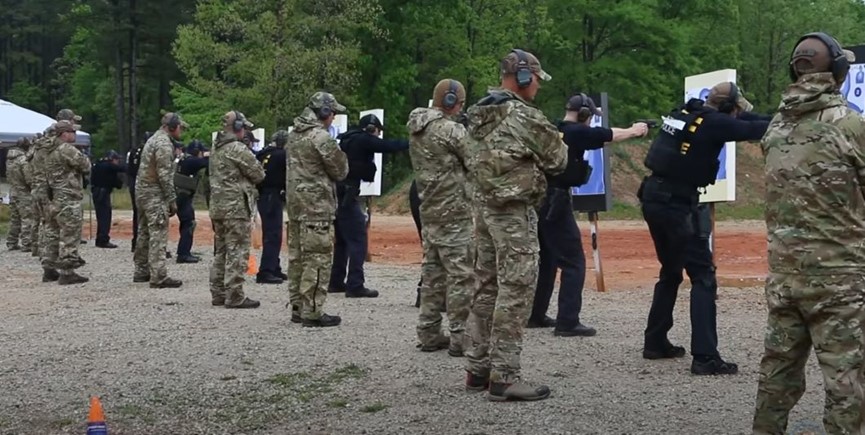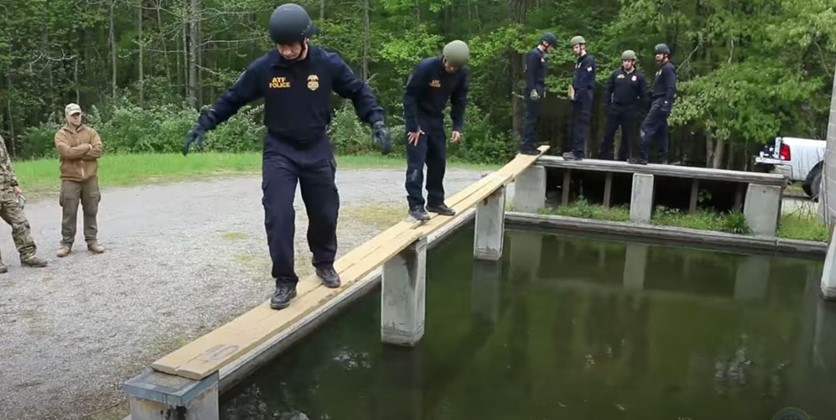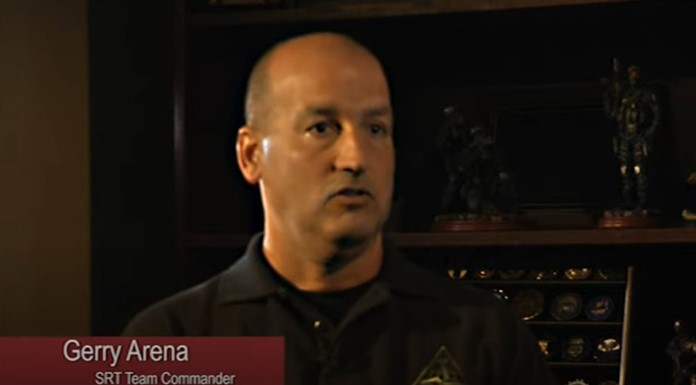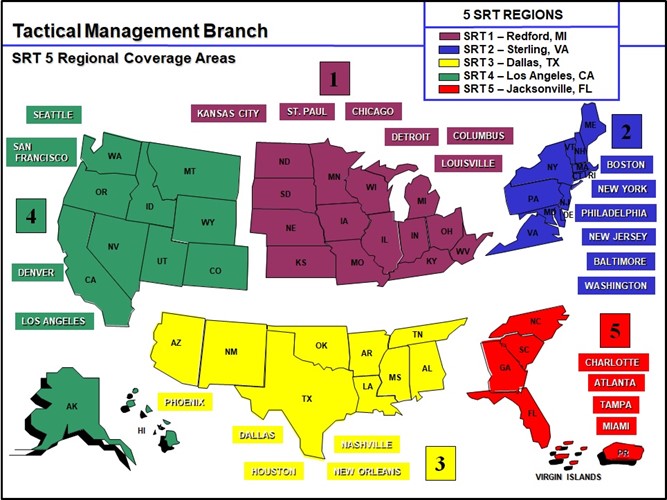
The training course for ATF’s Special Response Team is only two weeks long.
By Lee Williams
SAF Investigative Journalism Project
UPDATED April 29, 5:50 a.m. — Selection, training and leadership are vital to any special operations team, regardless of their size or mission parameters.
The more rigorous the selection process, the more comprehensive the training, the more professional the leadership, the better the unit will perform.
Delta Force’s Operators Training Course, for example, is six months long, and teaches advanced CQB, precision marksmanship, counterterrorism and a host of esoteric skills needed by Delta operators to meet their worldwide mission requirements. OTC is only open to candidates who survive Delta’s arduous Selection and Assessment phase.
DEVGRU’s Green Team selection and training course is also six months long, and only Navy SEALs who have completed BUDS and spent at last five years on an SDV or SEAL team can apply.
MARSOC Raider candidates must complete a nine-month course, known as the Marine Special Operations Individual Course, or ITC. MARSOC Officers must also attend a four-week Team Commanders Course after they graduate ITC.
Army Special Forces candidates can spend six months to two years training before they earn an SF tab and a Green Beret, and the pipeline for Air Force special operators can take 15 months to two years.
Special Agents who want to join the FBI’s Hostage Rescue Team must pass the New Operator Training School, which is 10 months long and extremely easy to fail.
United States Secret Service Counter Assault Team (CAT) members undergo a two-week selection course and then a seven-week basic training program. Secret Service snipers must pass a one-week selection process and then a 10-week sniper training course.
Candidates for Border Patrol’s Tactical Unit (BORTAC) undergo a three-week selection course and then a six-week training course before being assigned to a sector team. After a year, they can apply to join BORTAC’s elite national team.
By comparison, training for ATF’s Special Response Teams takes only two weeks, and ATF agents call themselves “operators” after they’ve completed the course.

Poor leadership
ATF refers to its SRT teams as “elite tactical groups.”
According to a September 2020 report from the United States Government Accountability Office (GAO) titled “Federal Tactical Teams: Characteristics, Training, Deployments, and Inventory,” ATF’s Special Response Team was created in 1989 and has 114 members. From 2015 to 2019, the SRT was deployed 886 times. More than 85% of the deployments were to execute arrest and/or search warrants.
“Their work includes search and arrest warrants, high-risk criminal investigations, undercover operations, surveillance operations, and protective service operations,” ATF states on its website.
ATF claims SRT’s two-week training course is an “intensive program,” during which SRT candidates “learn specialized skills such as marksmanship, manipulation of numerous weapon systems, individual and team tactical movement, tactical medicine, chemical agent deployment, use of less-lethal weapon systems, armored vehicle operations, surveillance, helicopter operations and operational planning. SRTs also participate in rigorous activities such as defensive tactics, breaching, rappelling, fast-roping, rural patrolling and operations.”
Anyone with even a modicum of tactical knowledge must scoff at these claims. There is no way any federal law enforcement agency can sufficiently teach its agents all of these techniques and bring them to acceptable skill levels in just two weeks. Tactical movement alone takes far more time to train and master, and what ATF calls “marksmanship” is nothing much beyond their standard qualification.

ATF SRT team leader Gerry Arena says his team is a “fully functioning tactical unit.” (Screenshot courtesy ATF.gov.)
ATF public relations officials posted a chilling interview on their website of Gerry Arena, an SRT team commander. Arena touts his team’s skills and stresses the dangerous nature of the criminals they encounter, but then he says the scary part out loud.
“Because we are a fully functioning tactical unit our team stays intact. We will never ever incorporate a member from an outside agency into our stack,” Arena said.
It is clear ATF doesn’t understand how truly bad their SRT teams are. In fact, they think they’re pretty good – fully functioning tactical units.
Sadly, the whole world now knows the truth – how poorly ATF’s SRT performs when called upon.
On March 19, members of ATF’s Region 3 SRT, which is headquartered in Dallas, conducted an early morning raid of Bryan Malinowski’s home in West Little Rock. A gunfight ensued, caused by ATF’s poor choice of raid tactics. An ATF agent who has never been named shot Malinowski in the head with his carbine. Malinowski, a 53-year-old airport executive with no prior criminal history, died of his wounds two days later. His family insists Malinowski didn’t know he was trading gunfire with federal agents. Instead, they say he thought he was defending himself and his wife from armed home invaders.
Not one member of ATF’s SRT wore a bodycam during the search warrant execution, which is contrary to ATF’s policy. To date, no one from ATF has made any statement about Malinowski’s killing, other than to say he fired first.
This is the latest example of the poor leadership of ATF’s teams. Real leadership is accountable. Real leaders take the blame when mistakes are made. And to be clear, ATF made a lot of mistakes that led to Malinowski’s killing, yet the team leaders remain mum.
Sara Abel, public information officer for ATF’s Dallas Field Division did not return calls seeking comment about the fatal raid.

Operators?
There is a lack of consensus even among the special operations community about who deserves the title: Operator. Some say only members of our Tier One units Delta and DEVGRU deserve the title, but this would leave out MARSOC Raiders, the majority of Navy SEALs, Army Special Forces, Air Force special operators and a whole bunch of Rangers.
Most special operators don’t care too much about the title. Besides, operator is a mindset, it’s not a tab or a badge, but one this is crystal clear: ATF SRT members are not operators. Their use of the term is an insult. They’re hardly even law enforcement. They are thugs with guns – poseurs in pricey Crye MultiCam – paid for by your taxpayer dollars. They are hammers who view every law-abiding gun owner as a nail.
Given their poor training and complete lack of professional leadership, it is only a matter of time before an SRT member kills another innocent American citizen in their home.
The Second Amendment Foundation’s Investigative Journalism Project wouldn’t be possible without you. Click here to make a tax-deductible donation to support pro-gun stories like this.



